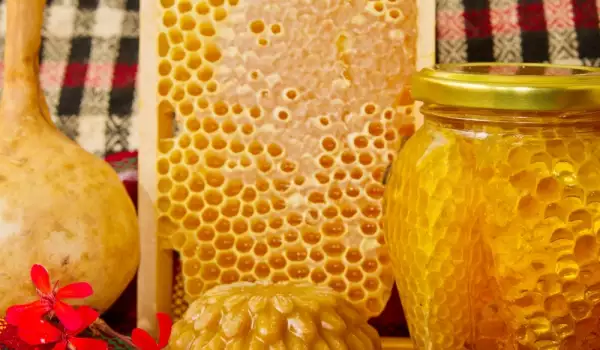Royal jelly is a natural bee product that is highly valued. Treatments with products derived from honey, known as apitherapy, have attributed properties to it such as boosting the body's resistances to various viral and bacterial infections.
Royal jelly is a thick, white or creamy substance, with a specific smell and a sour-sweet taste. This is a product that bees secrete to feed the queen, young worker bees and drones.
Royal jelly contains a very high biological value and is abundant in nutrients. There are 2 types: plain and uterine. The uterine type has a denser consistency and contains more nutrients.
Producing royal jelly is an arduous task. In about 1/2 a year, a well-maintained beehive can produce barely 1 lb (0.5 kg). Its perishability requires it to be extracted and stored at low temperatures. Mixing it with honey allows for it to be preserved longer.
Composition of Royal Jelly
Without a doubt, royal jelly is a fully edible food. Its composition includes a complex of an entire 18 amino acids in the structures of tens of proteins.
Some of them are physiologically active enzymes, as well as carbohydrates, vitamins, minerals, lipids. Numerous active substances in royal jelly such as peptides, sterols, proteins and others have not yet been adequately researched.
Choosing and Storing Royal Jelly

Royal jelly can be bought from pharmacies or specialized stores. Natural royal jelly must be stored in the fridge, at temperatures no higher than 40°F (5 °C) or in the freezer to be deep frozen and thus preserve its qualities for up to 7 years.
Besides on its own, royal jelly can be found in combination with various immunostimulators, anti-aging supplements. In cosmetics, it's added to a myriad of skin and hair products.
Taking Royal Jelly
Royal jelly must not have contact with metal objects because this results in a chemical reaction in which it loses some of its qualities.
It's best to consume royal jelly by placing it under the tongue and waiting several minutes for it to melt. This way, the royal jelly is absorbed more easily in the blood, giving the quickest result.
The recommended daily dose for adults if taking it prophylactically is between 350 and 700 mg. It's best to divide up the daily dose into 2 - take one in the morning and one in the afternoon.
It's not advised to take it at night because it stimulates the body and can lead to insomnia. For royal jelly remedies, the doses can be increased up to 1200 mg.
The recommended daily dose for children under 5 is between 0.2 and 0.5 g, while for infants it depends on the body weight.

Benefits of Royal Jelly
Royal jelly is used with great confidence as a substance that provides numerous beneficial effects for the human body. It improves metabolism, lowers cholesterol, raises the body's resistances.
It improves appetite and hematopoiesis, stimulating endocrine gland functions. Royal jelly slows aging, has antibiotic and antiviral properties.
Among the proven benefits of royal jelly are the excellent immunomodulatory effects it has against Graves' disease; the stimulation of the growth of neuroglia - types of cells that maintain the health and life of neurons in the human body. Last but not least, it stimulates stem cells.
Royal jelly normalizes blood pressure. It regulates glucose absorption in the body and fat metabolism.
Dangers of Royal Jelly
There have been registered cases of allergic reactions when taking royal jelly. If a person is allergic to pollen, increased caution must be taken the 1st time taking the bee secretion.
There have also been cases of asthma attacks, allergic crises, even death as a result of use of royal jelly when allergies were present.





















